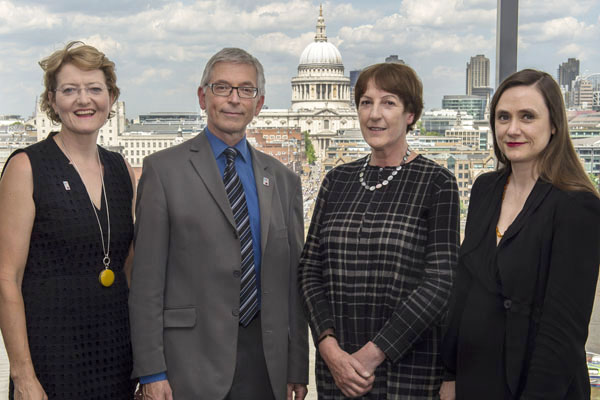May 2014. Client: Tyne & Wear Museum (Hatton Gallery)

Tyne & Wear Museum (Hatton Gallery) were down at Tate Modern for a reception to celebrate the artist, Richard Hamilton and the large exhibition of Hamilton’s work on display. In the 1950s and ’60s Hamilton was an academic at Newcastle University where his exhibitions like ‘Man, Machine & Motion’ still reverberate around their Hatton Gallery.
The reception and talks were held in the East Room on level 6 of the Tate which is a magnificent room that overlooks the river and has floor to ceiling windows – I definitely wanted to get the view and a sense of place into the key speakers shot. I lined up the four people at an angle to the window (from left to right: Judith Nesbitt, Head of National & International Initiatives, Tate / Prof. Eric Cross, Dean of Cultural Affairs, Newcastle University / Prof. Frances Spalding, Professor of Art History, Newcastle University / Julie Milne, Chief Curator, TWAM… Ok, I’ll spell that out too: Tyne & Wear Archives & Museums. There, can I get on with the story?)
I lined them up at an angle so as the flash from the camera wouldn’t reflect in the window. I wanted a large depth of field (which means I wanted to stay in focus from the peoples faces right back to St Pauls Cathedral) so I chose the f-stop 13. In these situations you have to start with the right exposure for the background, in this case 1/200 sec was correct for the brightly sunlit cathedral made of Portland stone. 1/200 will still sync with the flash (a Nikon Speedlight SB-910)but I needed to turn it up to its maximum power setting as I was also bouncing the flash off the low white ceiling before it illuminated my foreground subjects with a soft light. The speakers were only 2 metres away but the light had to travel from the camera to the ceiling then to the subjects and back to the camera, about 8 metres, while getting dissipated at every turn. Not only that, the f13 aperture is only a small hole that lets in very little of the light that finally arrives into the lens.
